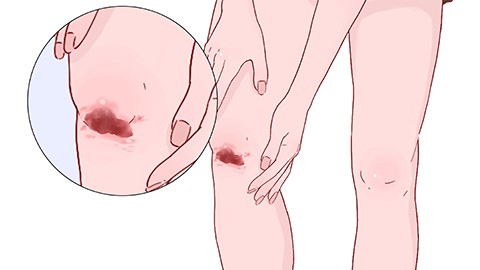What should I do if my leg cannot bend backward after knee surgery?
Generally, difficulty in bending the knee backward after knee surgery is often related to postoperative scar adhesion, muscle stiffness, limited joint range of motion, delayed rehabilitation exercises, and fear of pain. These issues can be improved through targeted rehabilitation training, physical interventions, and lifestyle adjustments. If there is no significant progress within 1–2 months after surgery, it is advisable to promptly consult your attending physician. The detailed analysis is as follows:
1. Gradually initiate rehabilitation exercises
In the early postoperative stage, start with passive knee flexion exercises—such as having a family member or physical therapist gently push the lower leg to bend the knee slowly. Hold each stretch for 10–15 seconds, performing 3–4 sets daily, gradually increasing the flexion angle. Progress later to active exercises, such as using the healthy leg to assist the affected leg in bending while seated, or performing slow squatting movements while standing and holding onto a wall. Avoid excessive force that may cause pain.

2. Use physical aids to relieve stiffness
Apply heat therapy to the knee area to improve local blood circulation—20 minutes per session, twice daily—to soften scar tissue and stiffened structures before performing knee flexion exercises. Alternatively, use a Continuous Passive Motion (CPM) machine under the guidance of a therapist to gradually increase knee joint range of motion. Each session typically lasts 30–60 minutes; frequency should follow medical advice.
3. Alleviate pain and reduce hesitation toward exercise
If pain prevents knee flexion, use medications under a doctor’s supervision to manage discomfort, such as oral celecoxib capsules, ibuprofen sustained-release capsules, or topical diclofenac diethylamine gel. Once pain subsides, gradually resume flexion exercises. Before training, gently massage the quadriceps at the front of the thigh and the hamstrings at the back to relax muscles and reduce resistance.
4. Prevent worsening of scar adhesion
After surgical wound healing, gently massage the skin and subcutaneous tissues around the knee. Use fingertips to softly rub the scar and surrounding areas 2–3 times daily for 5–10 minutes each time to promote scar softening and reduce restrictions on joint movement. Also, avoid keeping the knee fully extended for prolonged periods. When resting, place a thin pillow under the knee to maintain a slightly bent position.
5. Seek professional rehabilitation guidance
If self-directed exercises yield poor results or if the flexion angle remains stagnant, seek evaluation from a rehabilitation specialist. A professional therapist can design an individualized exercise program and, if necessary, employ manual release techniques or physical therapy modalities to improve joint mobility and prevent delays in recovery.
In daily life, strictly adhere to medical instructions for rehabilitation exercises and avoid premature weight-bearing or overtraining. Keep the knee warm to prevent muscle spasms caused by cold exposure. Record changes in knee flexion angles regularly to monitor recovery progress. If significant increases in pain, swelling, or wound abnormalities occur during training, stop immediately and seek medical evaluation.




